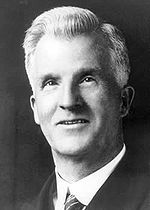Australian federal election, 1929
|
|
||||||||||||||||||||||||||||||||||
|---|---|---|---|---|---|---|---|---|---|---|---|---|---|---|---|---|---|---|---|---|---|---|---|---|---|---|---|---|---|---|---|---|---|---|
|
||||||||||||||||||||||||||||||||||
|
All 75 seats in the Australian House of Representatives 38 seats were needed for a majority |
||||||||||||||||||||||||||||||||||
|
||||||||||||||||||||||||||||||||||
|
||||||||||||||||||||||||||||||||||
Stanley Bruce
Nationalist/Country coalition
A House-only Federal Election was held in Australia on 12 October 1929. All 75 seats in the House of Representatives were up for election, but there was no Senate election. The election was caused by the defeat of the Bruce-Page Government in the House of Representatives over the Maritime Industries Bill, Bruce having declared that the vote on the bill would constitute a vote of confidence in his government.
With senators having fixed six-year terms, the terms of those senators elected in 1926 were not due to expire until 1932. Under the Constitution of Australia, no election for their replacement could occur more than a year prior to their terms expiring (except in the case of a double dissolution), so it was not possible to hold a half-Senate election in 1929. This was the first Commonwealth election for the House of Representatives alone.
In the election, the incumbent Nationalist Party of Australia led by Prime Minister of Australia Stanley Bruce, in power since 1923 with coalition partner the Country Party led by Earle Page, was defeated by the opposition Australian Labor Party led by James Scullin. Labor won with its then largest-ever majority in the federal parliament, but held only a minority of Senate seats as a result of the House-only election.
...
Wikipedia


